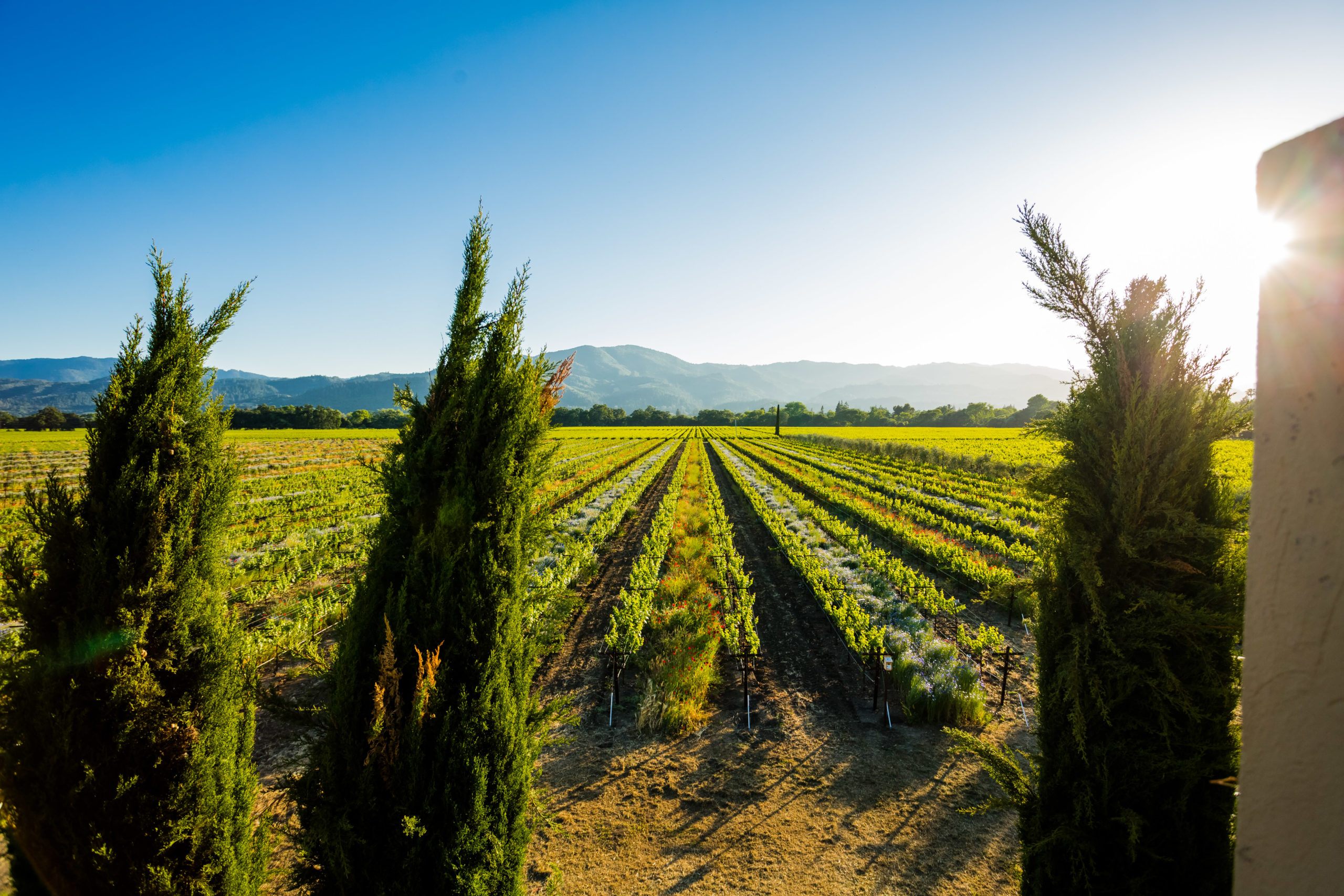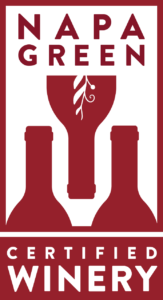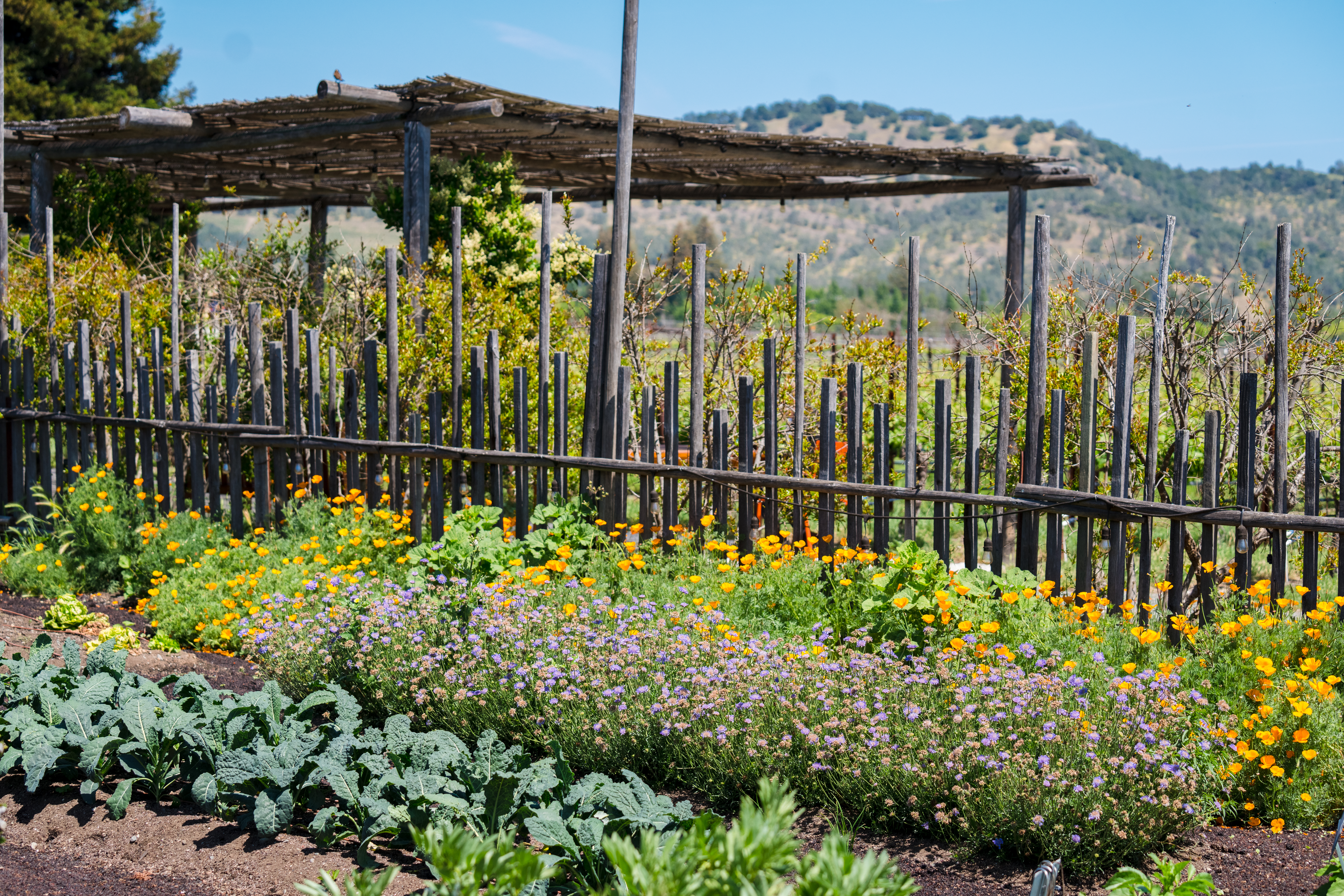Sustainability is now and has always been at the heart of what we do here at Round Pond Estate. For over 40 years, we have had the honor of stewarding this land.
Sustainability is not a one-time achievement, but rather a process, and we are constantly working on new ways to be conscious of how we utilize our resources.
We see sustainability manifesting across three core tenants at Round Pond Estate: people, place, and purpose. Through our Sustainability Series, we’re diving deeper into these three pillars and sharing more about this topic that is so dear to us.
Place
This we know: sustainability is not a one-time achievement, but an ongoing process, and we are continually pursuing ways to better utilize our resources and best care for our land.

Between the Vines
Sustainable wines begin in the vineyard, where we treat our vines with the utmost respect to ensure the fruit we grow is the truest expression of place.

Soil Health
We practice a low- to no-till system, disturbing the soil as little as possible to foster beneficial bacteria and fungi beneath the vines. We have a permanent cover crop of native grasses, which nourishes the soil and preserves the habitats for native bees and wasps.

Water Conservation
Located on the valley floor and planted to drought-resistant rootstock, our vines require very little irrigation. We closely monitor our water use to preserve as much as possible.

Weed Control
We utilize sheep for weed management instead of tractors or harsh pesticides. In addition to eating and trampling down the cover crop, the sheep boost soil health and fertility with their droppings.

Pest Management
Round Pond Estate is home to bluebird and owl boxes throughout the whole property. The bluebirds help eradicate insect pests in the vineyard; owls prey on the moles and gophers that burrow under the vines and damage their root systems. We strive for a biodiverse ecosystem with a variety of beneficial insects.

Fish-Friendly Farming
Beginning in 2011, we joined forces with Napa County on a Napa River restoration project. The process included deeding over a portion of the land that abuts the river to Napa County, along with removing and replacing non-native vegetation with native plants. We first received our Fish-Friendly Farming certification in 2011. This program, run by the California Land Stewardship Institute, strives to restore fish and wildlife habitat and improve water quality. We renew this certification every five years.

In the Cellar
As a Napa Green Certified winery, we are continually monitoring our energy use in our winemaking and around the winery property, from compostable and recyclable products to careful monitoring and recycling of our water. This in-depth certification process covers all aspects of winemaking and onsite energy use, so we established a Round Pond “Green Team” in 2021, made up of members from each part of the estate to work together to achieve our Napa Green goals.

Energy Consumption
From energy-efficient lighting to a new refrigeration system, we are continuing to pursue energy-saving tools in every part of the vineyard and winery. The Napa Green certification team requires a maximum kilowatt hour of energy used per case of wine produced, tracked through our onsite PG&E monitor.

Water Conservation
Part of the Napa Green certification provides guidelines on how many gallons of water should be used in the process of creating one gallon of wine. We closely monitor our water use for irrigation, cleaning, and consumption, and in 2023, we’ll be installing an onsite wastewater process treatment system (complete with an above ground earthroom bioreactor) to convert wastewater into irrigation-grade water to use for landscaping and gardening.

Glass & Labels
In the last several years, we’ve moved towards locally-made glass for our wine bottles, averaging a weight decrease of 25%, leading to less energy required to ship the wine. Additionally, we use 90% post consumer recycled material for our wine labels and all recycled material for packaging and paper products in the winery and tasting room.

Composting
After harvest, we compost the red grape pomace and utilize it for landscape mulch, closing the circle on vineyard waste. Any remaining grape pomace is composted through our local waste management.

aRound the Estate
Many of the Napa Green Winery parameters extend to the Round Pond tasting room and culinary experience. Our farm-to-table menu consists of 75% to 85% ingredients grown right here on the estate: a thriving herb garden, a bountiful citrus selection (Meyer lemon, grapefruit, blood orange), summer squash, eggplant, cherry tomatoes, fennel, carrots, string beans, zucchini, figs, pineapple guava, pomegranates, every berry under the sun, stone fruits, and an apple tree with multiple varieties grafted onto it.
Our approach? Use everything in the garden first, and base the menu around what’s in season and which ingredients are ready to be harvested on a given week. To keep up with the garden, our menu is changing on an almost day to day basis to use every morsel available from the culinary gardens. We invite you to read more about our garden on our Farm to Table, Grape to Glass post, linked here.

